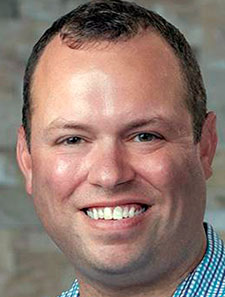As part of the pediatric track at SHM Converge 2025, Elise Lu, MD, PhD, FAAP, a pediatric hospitalist in the clinical teaching unit at Children’s Hospital and assistant professor at the University of Western Ontario, both in London, Ontario, delivered a compelling and engaging session tailored for pediatric hospitalists exploring the widely recognized “Things We Do For No Reason™” (TWDFNR) series of articles published in the Journal of Hospital Medicine. This session prompted participants to critically examine long-standing hospital practices that may be of low value, unsupported by strong evidence, or even potentially harmful.
Rethinking “discharge by noon”
The session began with a deep dive into the commonly discussed institutional goal of “discharge by noon.” Across many hospitals, pediatric and adult alike, this target has been promoted as a metric to improve hospital flow, reduce emergency department (ED) boarding, and optimize bed availability. However, as Dr. Lu illustrated, the evidence supporting this initiative as a stand-alone goal is limited and inconsistent.
While early discharge may intuitively seem beneficial, Dr. Lu reviewed key literature in this space, revealing that many of the studies often cited are flawed with issues of confounding and validity. Most published studies have shown that early discharge initiatives were often a countermeasure implemented among many other interventions, such as improved interdisciplinary communication, staffing adjustments, or changes to electronic health records (EHRs). As such, it becomes difficult to isolate the impact of early discharge as the primary driver of improvements in metrics like length of stay (LOS) or ED boarding.
Some studies have shown no significant or sustainable reduction in LOS associated with early discharge initiatives, while others have raised concerns about potential unintended consequences. Among these are the concerns for decreased opportunities for trainee education, as teaching moments during discharge planning may be deprioritized in the interest of meeting arbitrary time goals.
Rather than abandon efforts to improve discharge efficiency altogether, Dr. Lu encouraged more of an approach focusing on patient-specific readiness for discharge and systems-level solutions that optimize flow without compromising care quality or education.
Monitoring after oxygen weaning in bronchiolitis: necessary or habitual?
Building on the theme of discharge timing, the session transitioned to a frequently debated topic in pediatric hospital medicine: the practice of extended monitoring for infants with bronchiolitis after weaning from supplemental oxygen. In many institutions, discharge is delayed until the infant has been observed for several hours off oxygen, often including a monitored sleep period to ensure maintenance of oxygen saturation and stability. Based on a review of the most recent guidelines, the American Academy of Pediatrics (AAP) does not specifically address discharge criteria, but some European guidelines do recommend monitoring for a period of time after weaning from oxygen, including a period of sleep. This practice, though widespread, is largely based on tradition and precaution rather than robust evidence.
Dr. Lu reviewed data showing that transient oxygen desaturations during sleep are common in both healthy and ill infants and do not reliably predict clinical severity or hospital readmission. Studies suggest that once an infant with bronchiolitis demonstrates clinical improvement, defined by mild or no respiratory distress, minimal suctioning needs, and adequate oral intake, there is a high likelihood of continued recovery at home. Up to 96% of these patients do not experience a worsening of symptoms after meeting discharge criteria.
Dr. Lu cautioned against over-reliance on saturation thresholds as discharge determinants, particularly in clinically stable patients, and instead advocated for an individualized approach to discharge decisions.
Importantly, the speaker acknowledged that certain populations may warrant more conservative monitoring strategies. Infants under one month of age, or those with significant comorbid conditions such as congenital heart disease or chronic lung disease, may be considered at higher risk and should be evaluated with additional caution.
A broader cultural shift toward high-value pediatric care
The session provided an opportunity for broad reflection on how the TWDFNR framework can empower pediatric hospitalists to question longstanding practices and promote high-value, evidence-informed care. Dr. Lu’s analysis prompted lively discussion among attendees, with many sharing their own examples of potentially low-value practices and ideas for future topics in the TWDFNR series.
As always, the TWDFNR session was a highlight of SHM Converge in both the pediatric and high-value care tracks. Attendees left with renewed energy to pursue thoughtful clinical practice change, advocate for patient-centered care, and contribute to ongoing discussions about value in medicine.
Participants were invited to submit ideas for future TWDFNR topics by contacting the article series team at [email protected].
Key Takeaways
- Clinicians should be empowered to critically examine longstanding practices that may offer low value and lack strong supporting evidence.
- Rather than targeting “discharge by noon” as an isolated goal, clinicians and institutions should prioritize patient-specific discharge readiness and implement systems-based strategies to improve hospital flow.
- For infants hospitalized with bronchiolitis, discharge decisions should be individualized. Many patients may be safely discharged without prolonged monitoring, including a sleep period, once they demonstrate clinical improvement and are weaned from supplemental oxygen.
 Dr. Fish is a med-peds hospitalist and the program director of the Pediatric Hospital Medicine fellowship at Baystate Medical Center in Springfield, Mass.
Dr. Fish is a med-peds hospitalist and the program director of the Pediatric Hospital Medicine fellowship at Baystate Medical Center in Springfield, Mass.